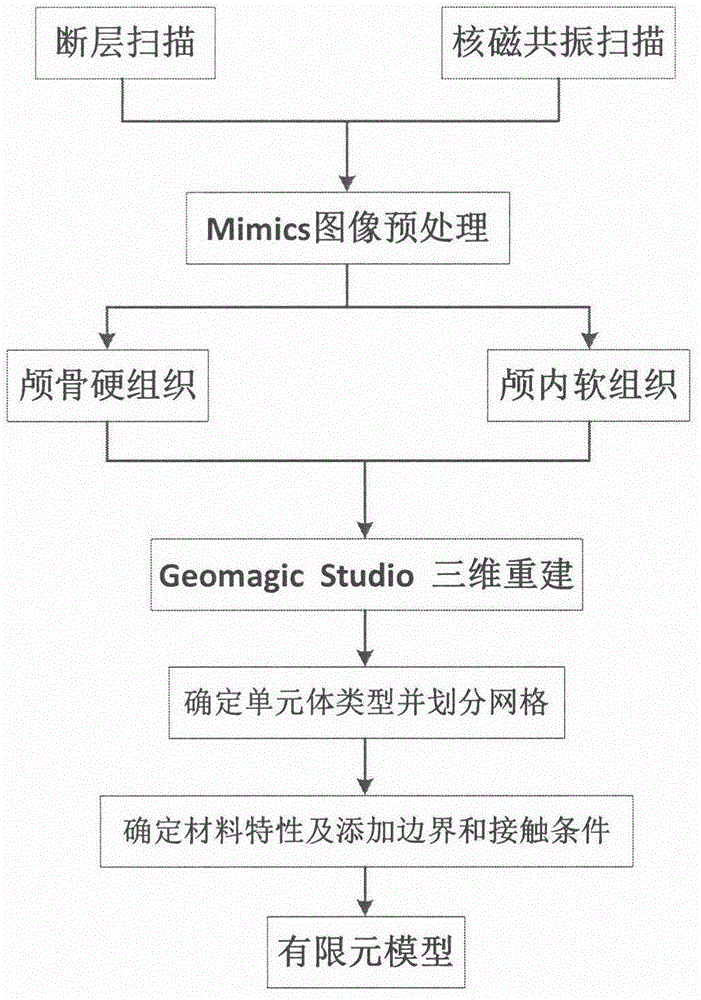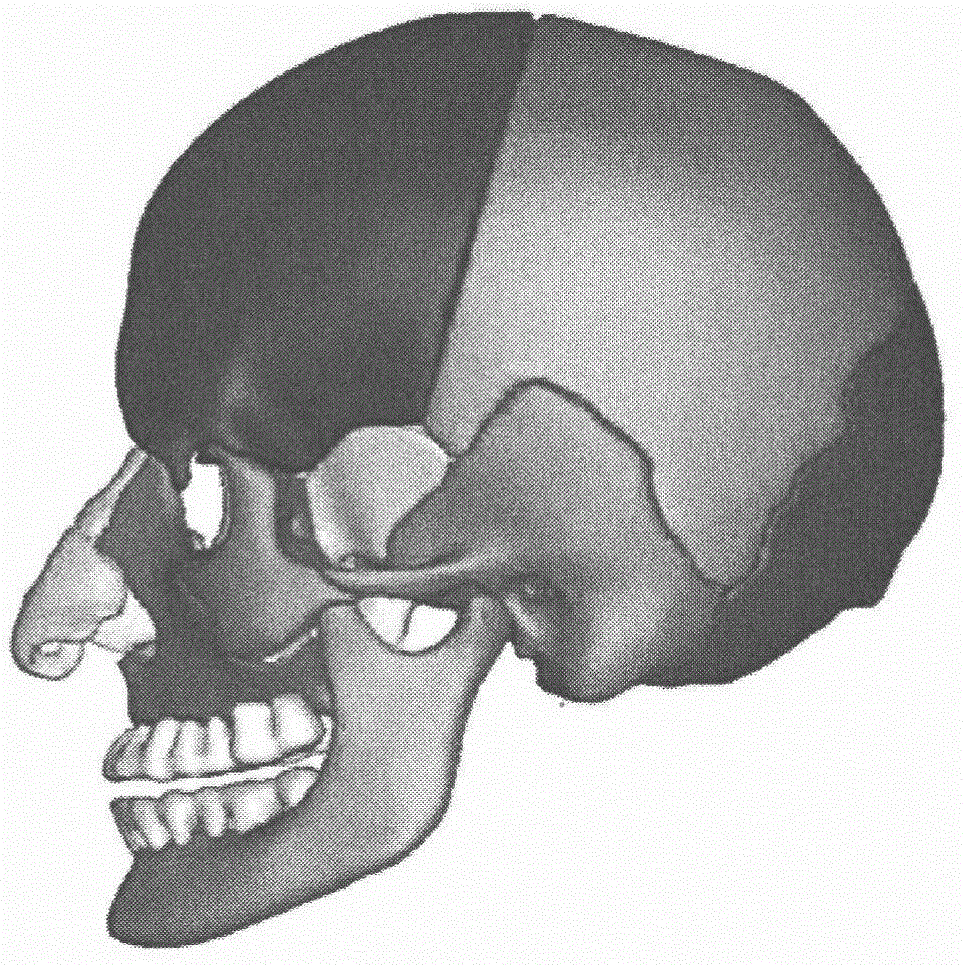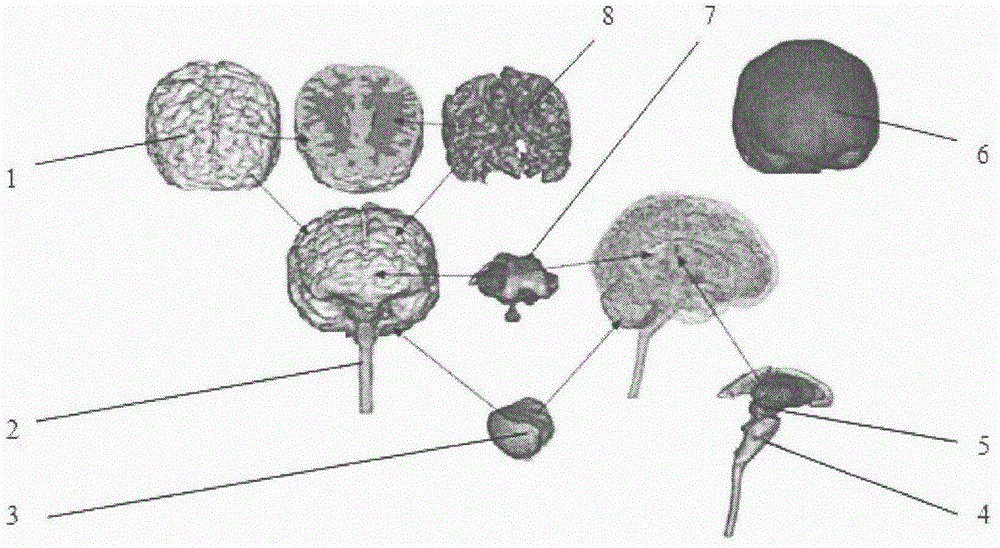Finite element modeling method for human head for researching collision damage of automobile
A modeling method and finite element technology, applied in 3D modeling, special data processing applications, image data processing, etc., can solve problems such as the inability to obtain detailed mechanical parameter distribution, and achieve the effect of good stability and biological fidelity
- Summary
- Abstract
- Description
- Claims
- Application Information
AI Technical Summary
Problems solved by technology
Method used
Image
Examples
Embodiment Construction
[0022] In order to make the technical means, creative features, goals and effects of the present invention easy to understand, the following embodiments will specifically illustrate the human head finite element modeling method of the present invention in conjunction with the accompanying drawings.
[0023] Such as figure 1 As shown, a finite element modeling method for the human head used in the research of automobile collision damage is carried out through the following steps:
[0024] Step 1: First obtain the geometric data of the anatomical structure of an adult male head by segmentation, in order to distinguish different tissues of the head and classify the tissues with the same performance. Among them, skull information is extracted from computed tomography images, and the obtained tomography images have high density resolution, including bones, cartilage, and sinuses, and even compact and cancellous bone tissues can also be distinguished according to tomography images ...
PUM
 Login to View More
Login to View More Abstract
Description
Claims
Application Information
 Login to View More
Login to View More - R&D
- Intellectual Property
- Life Sciences
- Materials
- Tech Scout
- Unparalleled Data Quality
- Higher Quality Content
- 60% Fewer Hallucinations
Browse by: Latest US Patents, China's latest patents, Technical Efficacy Thesaurus, Application Domain, Technology Topic, Popular Technical Reports.
© 2025 PatSnap. All rights reserved.Legal|Privacy policy|Modern Slavery Act Transparency Statement|Sitemap|About US| Contact US: help@patsnap.com



